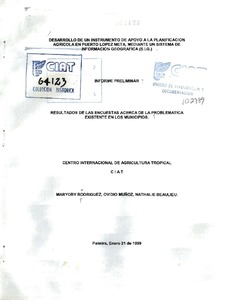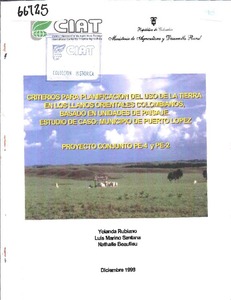Mission
To reduce hunger and poverty, and improve human nutrition in the tropics through research aimed at increasing the eco-efficiency of agriculture.
People
CIAT’s staff includes about 200 scientists. Supported by a wide array of donors, the Center collaborates with hundreds of partners to conduct high-quality research and translate the results into development impact. A Board of Trustees provides oversight of CIAT’s research and financial management.
Values
- Shared organizational ethic
- We respect each other, our partners, and the people who benefit from our work. We act with honesty, integrity, transparency, and environmental responsibility in all of our joint endeavors.
- Learning through partnerships
- We work efficiently and pragmatically together and with partners. Considering our diversity to be a key asset, we adapt readily to change and strive to improve our performance through continuous learning.
- Innovation for impact
- We develop innovative solutions to important challenges in tropical agriculture, resulting in major benefits for the people who support, participate in, and profit from our work.
Members:
Resources
Displaying 531 - 535 of 958Developing a natural resource management technology for a specific agroenvironment: Mucuna-maize rotation on the hillsides of northern Honduras
Desarrollo de procesos organizativos a nivel local para el manejo colectivo de los recursos naturales
Criterios para planificación del uso de la tierra en los Llanos Orientales colombianos, basado en unidades de paisaje. Estudio de caso: Municipio de Puerto López, Projecto conjunto PE-4 y PE-2
This article presents criteria and recommendations to support the landuse planning process in the savanna land ecosystem of the municipality of Puerto Lopez. These criteria were established from the analysis and correlation of the characteristics of the landscape and soils, taking in consideration biophysical and management aspects. They are expressed as limitations and potentialities for the crops, agroforestal production and conservation, and are given for the different geomorphological positions.




